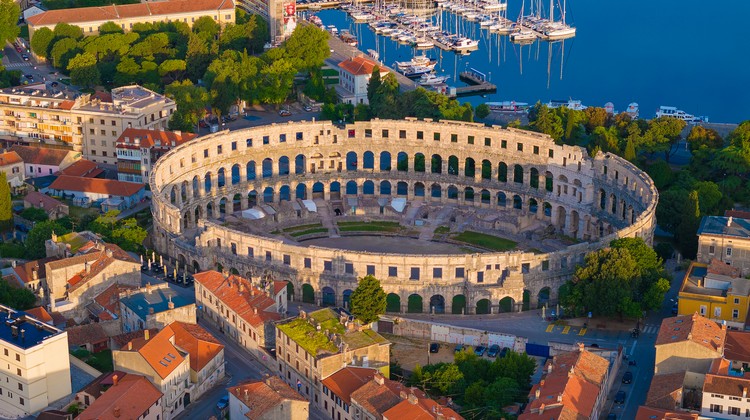Nestled along the sparkling blue waters of the Adriatic Sea, Croatia's coastal regions boast a rich tapestry of cultural heritage, each corner infused with centuries of history, tradition, and influences from diverse civilizations. From the ancient ruins of Istria to the sun-drenched islands of Dalmatia, the coastal stretch of Croatia offers a captivating journey through time.
Istria, often referred to as the "Terra Magica," serves as the gateway to the Adriatic and holds a significant place in Croatia's cultural landscape. Its strategic location has attracted numerous civilizations over the centuries, leaving behind a mosaic of influences. From the well-preserved Roman amphitheater in Pula to the charming medieval towns of Rovinj and Poreč, Istria is a treasure trove of historical landmarks. The region's rich culinary tradition, highlighted by truffles, olive oil, and local wines, reflects its diverse cultural heritage.

Kvarner Bay, with its shimmering waters and verdant landscapes, offers a harmonious blend of nature and history. The coastal towns of Opatija and Rijeka bear witness to the region's past as important maritime and trading centers. Opatija, once a favored retreat for European nobility, exudes Belle Époque elegance with its grand villas and lush gardens. Meanwhile, Rijeka's bustling port has been a melting pot of cultures, evident in its eclectic architecture and vibrant cultural scene.
Primorje, stretching from the northern Kvarner coast to the Velebit Mountains, captivates visitors with its scenic beauty and cultural richness. The towns of Senj and Crikvenica embody the region's maritime heritage, their medieval fortresses standing as silent sentinels against the Adriatic's tumultuous past. Beyond the coast, the rugged landscapes of the Gorski Kotar hinterland offer a glimpse into Croatia's inland traditions, with picturesque villages and folklore traditions still cherished today.
Zadar, an ancient city with a history dating back to Roman times, is a testament to the region's status as a crossroads of civilization. Its iconic Roman Forum, medieval churches, and Venetian fortifications bear witness to the city's rich historical legacy. The unique Sea Organ and Greeting to the Sun installations along the waterfront blend contemporary art with ancient maritime traditions, symbolizing Zadar's enduring spirit of innovation.
Dalmatia, renowned for its pristine beaches and sun-kissed islands, is a jewel in Croatia's coastal crown. Split, with its magnificent Diocletian's Palace, stands as a living testament to the Roman Emperor's legacy. The historic towns of Trogir, Šibenik, and Dubrovnik are UNESCO World Heritage sites, their medieval walls and labyrinthine streets offering a glimpse into Dalmatia's storied past. The islands of Hvar, Brač, and Korčula, adorned with ancient olive groves and vineyards, beckon travelers to explore their timeless beauty.
Southern Croatia, encompassing the regions of Dubrovnik-Neretva and Split-Dalmatia, is a land where tradition thrives amidst breathtaking landscapes. Dubrovnik, known as the "Pearl of the Adriatic," enchants visitors with its immaculately preserved medieval walls and baroque architecture. The rugged beauty of the Pelješac Peninsula and the fertile plains of the Neretva River Delta offer a glimpse into Southern Croatia's agricultural traditions, where wine, olive oil, and mandarins are cultivated with care. The Dubrovnik region, with its ancient forts and Renaissance palaces, adds another layer to the cultural richness of Southern Croatia.

Croatia's coastal regions, from the Istrian peninsula to the southern shores, form a tapestry of cultural heritage that continues to enchant and inspire. With its ancient ruins, medieval towns, and vibrant traditions, this coastal stretch of the Adriatic is a testament to Croatia's enduring legacy as a crossroads of civilizations. Whether exploring the Roman amphitheaters of Istria or strolling along the limestone streets of Dubrovnik, visitors to Croatia's coastal regions are sure to be captivated by its rich cultural heritage.